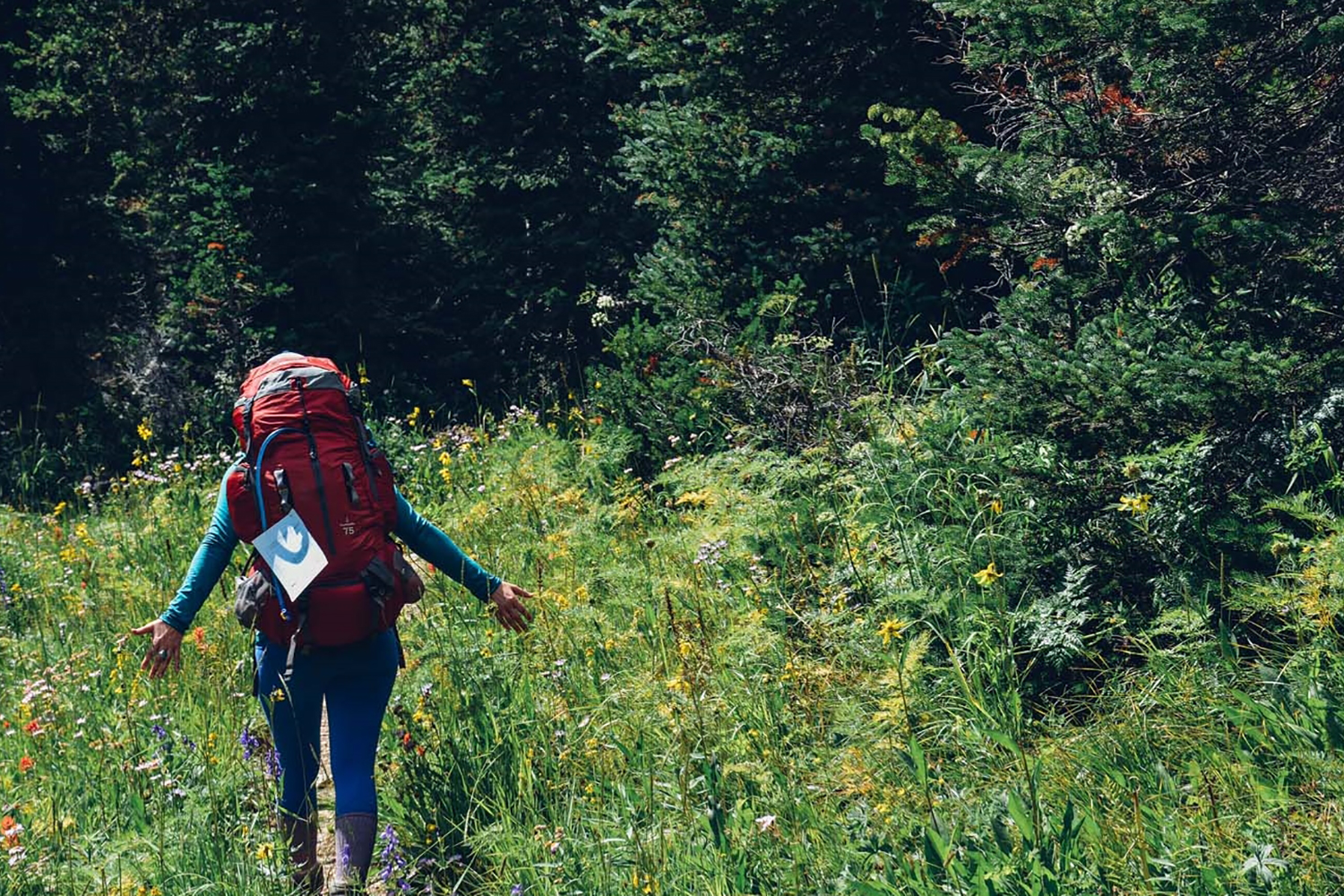On Connecting Outdoors

On Connecting Outdoors
Words and Photography by Kathleen Morton
Social media is a constant reminder of the power of storytelling. But when it comes to nature, are we doing it for the right reasons? Are we doing it just to get a good photo? Are we moving away from our connection to outdoor spaces?

Recently we’ve seen the effects of this in the news as some try to push boundaries and bypass trespassing signs. Others leave behind their trash or walk off trail and disturb the health of the land.
It’s easy to get discouraged and lose faith in humanity when you read stories and witness this activity. But for a lot of people, it can also be just as easy to forget what it’s like to relate to our planet. How do we connect with nature when we live behind walls and stare into small devices?
I wanted to know what it felt like to be closer to nature…
Was there a way to benefit from being outside more than just being there?

When we were children, we played in the dirt and studied bugs and their behavior. We learned to problem solve and get creative by building tree houses and forts in the backyard. We experienced growth and development when we watched trees grow more branches and vegetables come in and out of season.
As we get older, we become consumed by the need to make money and spend it. We start to value our indoor space and spend less time outside. Suddenly, we’re mixing both worlds and trying to figure out how to balance our time. We go on hikes after work, but our hours are limited as we chase daylight and hurry back to our homes.
It feels good to be outside even in short bursts of time, but I wanted to know what it felt like to be closer to nature. I wanted to spend more than just a few hours in the wilderness away from the city and other distractions. Was there a way to benefit from being outside more than just being there?

The First Step
I started by going on solo hikes for the first time. They began as a way to talk through my internal battles and find solutions. Eventually, the internal conversation would shift and I would begin to focus on my surroundings. I started to see things on familiar trails that didn’t stand out before. A tree in the distance that swayed in the wind. How had I never noticed it before?
Eventually, the internal conversation would shift and
I would begin to focus on my surroundings.
I spent a lot of my time going up to plants and looking at them more closely. I touched moss on a tree and counted flower petals. I felt rocks in my hand and imagined how water had run over the surface. I stared at hawks and watched where they dived. I listened to the wind and noticed the clouds as a way to know when a storm was rolling in.



Were there also things that I couldn’t see, but could imagine. Like a coyote that might be hiding in a thicket of bushes, or the roots of a flower that might be spreading to other plants underground?
Natural Benefits
Being outside is good medicine—a natural escape from the walls that close in while we work indoors. We depend on grocery stores for our food, but there are abundant things to eat in nature if we know where to find them. Most wild plants contain medicinal properties that can heal you from various ailments.

Walks are meditative in themselves, but it is helpful to slow down at times and take everything in by staying in one location. Practicing meditation and yoga in an outdoor space helps us slow our breathing and focus on the sounds that nature provides.
It also helps to write down or sketch these observations as soon as you experience them. These thoughts can be fleeting and easily forgotten once you leave the outdoor space.

As you leave indoor spaces and spend more time outside, you will notice your version of comfort changing. A tent becomes more gratifying than a bed.
Walking in barefeet becomes more bearable. You’re used to looking at dirt in your hair and fingernails. Meals made over a fire taste better than cooking at home.
You can spend hours lying in a hammock without scrolling through your Facebook feed or responding to text messages. Conversations with others will flow organically and be less focused on the things that mattered in the city.


Go outside, not for the purpose of checking it off a to-do list, but for the desire to feel something. It might inspire you to create more freely, relieve stress, learn to forage and expand your comfort zone. In return, we can give back to nature through examining the ways we live and respecting outdoor spaces.
Most of us don’t live in the wilderness every day. So do your best to escape.
Kathleen Morton is a consistent contributor to She Explores and the founder of Tiny House Tiny Footprint. She’s a photographer and journalist experimenting in tiny living. Follow her on Instagram, Twitter, and Facebook.
Be the first to comment